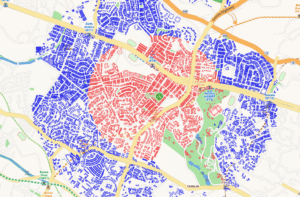Singapore’s property market thrives on a careful balance of demand, supply, and forward-thinking government policies. The Urban Redevelopment Authority (URA) plays a crucial role in this transformation by creating guidelines that promote urban efficiency, enhance livability, and stabilise prices.
While the Gross Floor Area (GFA) Harmonisation has been praised for benefiting homebuyers, other URA policies have also improved living standards, making new developments more attractive and reasonably priced. This article examines key changes in URA policies from 2008 to 2022, their impact on property planning and prices, and what these changes mean for you as a fellow homebuyer or investor.
1. A Timeline of Key URA Policy Shifts (2008–2022)
The URA’s evolving guidelines reflect Singapore’s need to optimise land use, enhance resident lifestyles, and stabilise the property market. Below is a summary of major updates from 2008 to 2022:
2. Why Did These Changes Happen?
URA policies are guided by three core objectives:
- Urban Optimisation: In land-scarce Singapore, every square meter is valuable. Policies such as Gross Floor Area (GFA) harmonisation ensure that space is used efficiently.
- Liveability: Features such as balconies, recreational areas, and enhanced retail layouts improve the quality of life for residents.
- Market Stability: The Land Betterment Charge (LBC) and transparent pricing mechanisms help prevent excessive land costs.
These updates aim to align planning regulations across different agencies, improve layout efficiency, and ensure fairer land valuations, ultimately benefiting both developers and buyers.
3. How These Changes Affect Property Prices
URA policies have a direct impact on property development costs and buyer perceptions, influencing prices in several significant ways:
Lifestyle Upgrades Drive Demand
The incentives introduced in 2018 for balconies and recreational spaces allow developers to create units with desirable features, such as spacious balconies and on-site gyms. Additionally, the 2022 harmonization of Gross Floor Area (GFA) ensures that layouts are practical, enhancing the overall appeal of the properties. For instance, compact units with usable balconies tend to attract young professionals and often command a premium price.
Land Betterment Charge Moderates Costs
The Land Betterment Charge (LBC), introduced in 2022, consolidates various levies into a clearer framework, replacing the previous Development Charge. This change reduces uncertainty in land acquisition costs for developers, resulting in more disciplined bidding during en bloc sales or land tenders. Consequently, price spikes in the property market are moderated, ultimately benefiting buyers.
Transparency in Pricing
In 2008, the removal of GFA exemptions for bay windows and planter boxes meant that buyers are charged only for usable space. This increased transparency enables buyers to make informed decisions, as they can easily compare the true value of different projects.
4. Do These Changes Appeal to Today’s Buyers?
Yes, the Urban Redevelopment Authority’s (URA) policies align with modern buyer priorities, emphasizing efficient layouts, desirable lifestyle features, and transparent pricing. Recent new launches illustrate this alignment with impressive sales figures:
- Lentor Mansion: Sold 400 out of 533 units (75%) on launch weekend, benefiting from the 2022 Gross Floor Area (GFA) harmonization, which promotes space-efficient layouts ideal for families.
- Emerald of Katong: Achieved sales of 835 out of 846 units (98.7%), with appealing balconies and communal spaces that attract young couples.
- Norwood Grand: Sold 292 out of 348 units (84%), leveraging recreational space incentives from 2018 that introduced a rooftop gym.
- Chuan Park: Sold 76% of over 900 units, redesigned under the 2022 dwelling unit guidelines for more functional layouts.
- Nava Grove: Sold 359 out of 552 units (65%), with compact units and shared facilities appealing to first-time buyers.
- The Orie: Sold 668 out of 777 units (86%) in Toa Payoh at S$2,704 per square foot, driven by its city-fringe location and balcony incentives from 2018.
- Parktown Residences: Sold 1,041 out of 1,193 units (87%) in Tampines North, featuring a diverse range of unit types optimized according to 2022 guidelines.
- Elta: Achieved a 65% take-up rate, with two-bedroom units popular due to the low-density design and layout efficiency introduced in 2022.
- Lentor Central Residences: Sold 445 out of 477 units (93.3%) by 5 PM on launch day, enhanced by family-friendly recreational spaces.
These projects demonstrate how URA policies translate into layouts and features that resonate with buyers, resulting in high take-up rates.
Why It Matters: Older developments with inefficient spaces, such as bay windows, are now considered less competitive. In contrast, new projects provide better value and modern appeal.
To see how these policies impact real-world property appeal, watch this video that illustrates URA’s influence on Singapore’s real estate market.
5. Implications for Homebuyers and Investors
Recent policy changes by the Urban Redevelopment Authority (URA) have reshaped Singapore’s property market, creating both opportunities and considerations for homebuyers and investors. Here’s a clearer overview of what these changes mean and how you can take advantage of them:
For Homebuyers
- Better Value for Money: The 2022 harmonization of Gross Floor Area (GFA) and the removal of GFA exemptions established in 2008 ensure that buyers pay for usable space instead of decorative features, such as bay windows. New developments now offer efficient layouts that maximize every square foot
- Enhanced Living Experience: Policies enacted in 2018 to incentivize balconies and recreational spaces mean that newer projects often include lifestyle features, such as balconies, gyms, and communal areas, which enhance the quality of life.
What to Do:
- Prioritize New Launches: Focus on developments that launched post-2022 for optimized layouts and transparent pricing. Review floor plans to ensure the usable space meets your needs.
- Seek Lifestyle Features: Choose projects that include balconies or shared facilities, as these add long-term value and comfort.
- Compare Pricing: Use URA’s transaction data to compare price per square foot (psf) across different projects, ensuring that you receive fair value.
For Investors
- Stronger Resale Potential: Developments featuring modern layouts and lifestyle amenities, enabled by the policies from 2018 and 2022, are more appealing to future buyers, which boosts resale value.
- Market Stability: The 2022 Land Betterment Charge (LBC) reduces speculative land bidding, stabilizing property prices and minimizing the risk of market bubbles.
What to Do:
- Analyze LBC Impacts: Check URA’s LBC rates to understand the land cost implications for new projects. This will help you determine if a development’s pricing is sustainable.
- Target High-Demand Areas: Invest in projects like The Orie or Parktown Residences, located in city-fringe or growth areas, which align with URA’s layout guidelines and demonstrate strong buyer interest.
- Monitor Master Plan 2025: Stay updated on URA’s upcoming zoning or policy changes via their website, as these could influence property values in specific areas.
6. Final Thoughts
URA’s policy changes are not just minor regulatory adjustments; they play a significant role in shaping the homes of Singaporeans and influencing their investments. By focusing on efficiency, liveability, and transparency, these updates provide buyers with improved options and offer investors more informed opportunities. As we approach the Master Plan 2025, being informed about URA policies will be essential for navigating Singapore’s dynamic property market.
For more insights, visit URA’s official website or explore related articles on PropertyNet.sg.
🚀 Stay Ahead in the Property Market!
Be the first to receive exclusive updates, launch reviews, insider deals, and real-time alerts — directly on your preferred app.
👉 Join our community now:
🌐 Spread Knowledge. Share with Others.
Click any of the icons below to share this content with those who may benefit from it.





